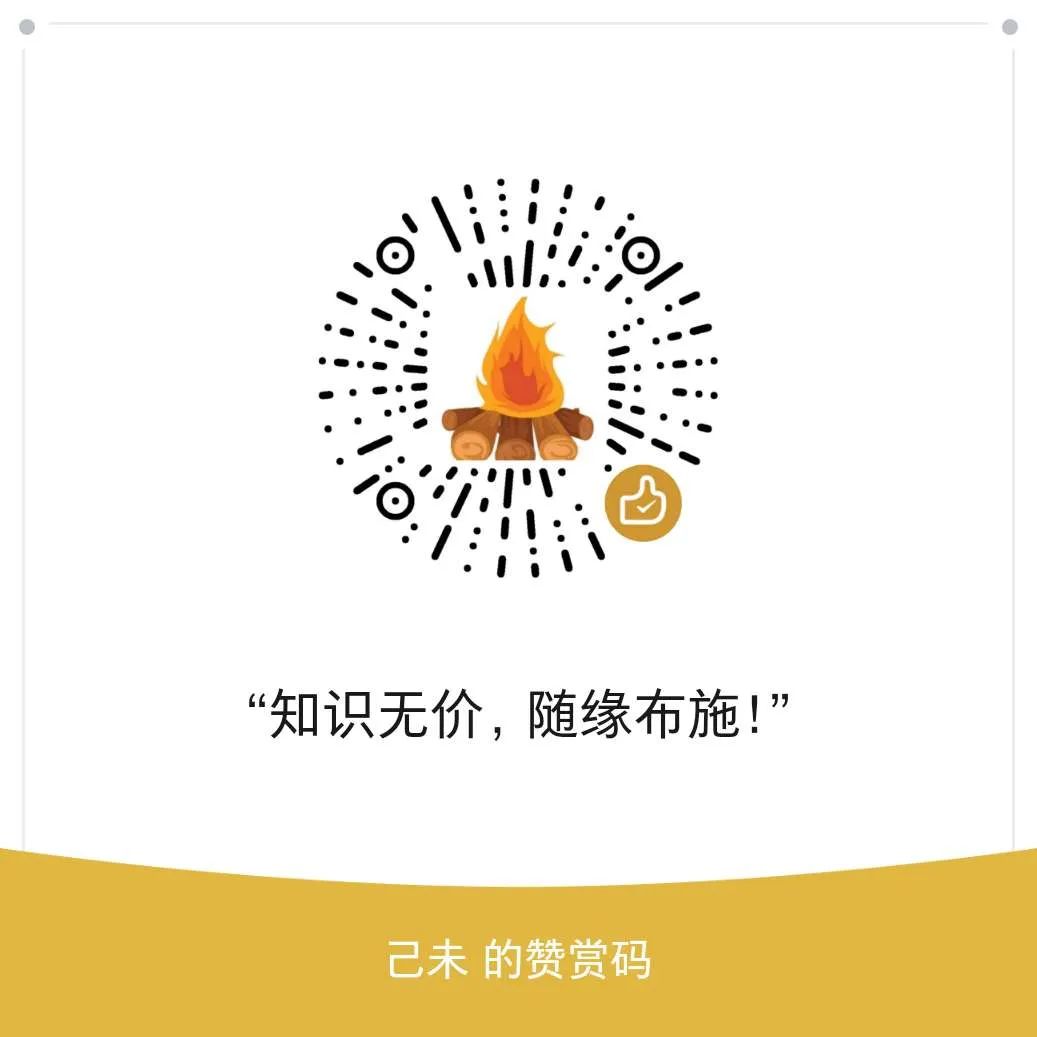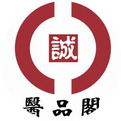There are two basic principles for the occurrence of internal diseases in the human body:
(1) All diseases arise from deficiency
(2) All diseases are generated by Qi
The treatment scope of TCM internal medicine is extremely broad, with many patients suffering from internal diseases caused by the five organs and six bowels, leading to a high incidence rate. The probability of internal diseases in the human body accounts for a significant proportion of the population, exceeding 70% of the total incidence rate.
All diseases arise from deficiency
As the saying goes: “A weak body is prone to illness.” When the body is deficient, it is easy to get sick. There are four types of deficiency (Qi deficiency, blood deficiency, Yin deficiency, Yang deficiency). In clinical practice, some patients may only have one type of deficiency, some may have two, and others may have more than two, with all four types indicating a complete deficiency. The less deficiency present, the milder the disease; the more severe and numerous the deficiencies, the more serious the disease.
When the body is deficient, patients lose their resistance, making it easier for pathogenic factors to invade the body and cause disease. I have found that every patient has a deficient aspect to their illness; as the saying goes, “No deficiency, no disease; if there is disease, there is deficiency.” This aligns with the TCM principle that righteousness cannot overcome evil.
1) Qi deficiency
All five organs in the human body have the function of Qi transformation: the lungs govern Qi, the spleen has spleen Qi, the stomach has stomach Qi, the heart has heart Qi, the liver has liver Qi, and the kidneys have kidney Qi. The strength of the Qi transformation function of each organ directly relates to the body’s resistance. Any organ that experiences Qi insufficiency or Qi deficiency can lead to disease. The organ with reduced Qi function will become diseased. Qi deficiency can manifest in the following ways:
1. Patients with spleen Qi deficiency: chest tightness, shortness of breath, limb swelling, excessive sweating, and susceptibility to colds.
2. Patients with middle Qi deficiency: gastric prolapse, rectal prolapse, uterine prolapse.
3. Patients with stomach Qi deficiency: poor digestion, lack of appetite, abdominal distension after eating.
4. Patients with heart Qi deficiency: palpitations and shortness of breath.
5. Patients with liver Qi stagnation: irritability, chest fullness, and pain in the ribs.
6. Patients with kidney Qi deficiency: soreness and weakness in the lower back and knees, fatigue.
2) Blood deficiency
Blood is the source of life in the human body and is an important material foundation for life. When the body is deficient in blood or loses too much blood, it poses a danger to life. Commonly referred to as blood deficiency includes anemia, insufficient blood supply to the heart, myocardial ischemia, insufficient blood supply to the brain, and cerebral ischemia.
Blood deficiency means that the body’s blood volume is lower than that of a normal person. Those with blood deficiency are more prone to illness. The pulse of blood-deficient individuals is often thin, and their skin color tends to be yellow, with a sallow complexion.
When blood is insufficient to fill the blood vessels, it can lead to insufficient blood supply to the heart and brain, and can also cause ischemia in other organs. This can result in insufficient blood supply to various tissues and cells in the body, leading to symptoms such as dizziness, headaches, palpitations, insomnia with vivid dreams, night sweats, fatigue, and even symptoms like blood deficiency causing wind, limb tremors, and numbness, which can endanger life.
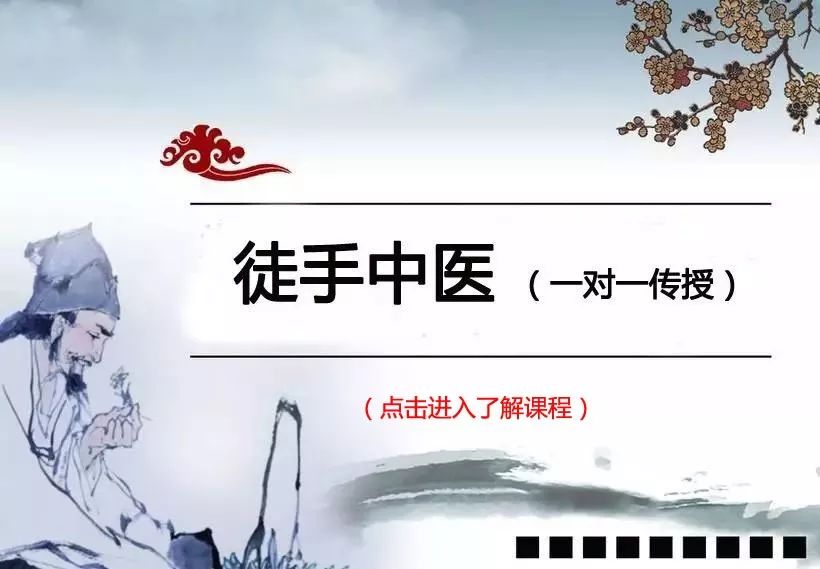
3) Yin deficiency
The human body is an organic whole, and the Yin and Yang of the body represent the attributes of various organs. The balance of Yin and Yang is key to health. When the Yin and Yang are balanced, a person does not get sick. Conversely, if the organs are imbalanced, diseases will occur.
In TCM, Yin refers to the body’s essential fluids, blood, nutrients, and other useful substances, which are the material basis of life and are indispensable to the human body. These substances are akin to the oil in a machine; when a machine has oil, it can run smoothly. When a person has blood, fluids, and nutrients, they have warmth and life. This is the Qi transformation function of Yin. Without the internal foundation of Yin, there is no life. Not only humans depend on Yin for nourishment, but all organic life on Earth does; without Yin, life cannot be sustained. The TCM theory of Yin and Yang harmony is scientifically sound.
Yin deficiency means that the body’s blood, fluids, and nutrients are relatively reduced, which inevitably leads to phenomena such as internal heat generated by Yin deficiency, fire generated by Yin deficiency, and Yang hyperactivity due to Yin deficiency. Patients may experience a series of symptoms such as fever, excessive heat, and inflammation.
4) Yang deficiency
Yang is synonymous with heat; movement is Yang, while stillness is Yin. Sufficient Yang energy results in a vibrant spirit, vitality, and energy, all of which are manifestations of Yang. The existence of Yang relies on Yin as its internal foundation; without Yin to nourish it, Yang cannot exist. The balance of Yin and Yang is crucial; one cannot exist without the other.
When a person experiences Yang deficiency, it can lead to the occurrence of diseases, as Yang deficiency generates cold. This means that Yang deficiency can lead to cold symptoms, such as fear of cold, cold limbs, fatigue, wind-cold-damp obstruction, limb swelling, cold pain, abdominal pain due to cold, bowel sounds and diarrhea, uterine cold leading to infertility, lower abdominal pain, dysmenorrhea, bradycardia, hypotension, impotence, premature ejaculation, and even symptoms like cold limbs, weak pulse, confusion, and profuse sweating, which are critical conditions of Yang deficiency.
The TCM theory of Yin and Yang is a very scientific assertion. The theory is not only used to explain the internal structure and physiological functions of the human body but also applies to pathological changes, dialectics, and treatment. Achieving Yin and Yang balance is the ultimate goal of TCM treatment. The theory can also be applied to explain any issues in the universe; it is a great theory, and TCM’s Yin-Yang theory is a great science.
All diseases are generated by Qi
Excessive Qi can harm the liver; anger causes Qi to rise, sadness causes Qi to descend, joy causes Qi to relax, overthinking causes Qi to stagnate, shock injures Qi, fear causes Qi to reverse, and worry causes Qi to stagnate. These are the seven emotions, which are the seven types of emotional states in the human body, and the internal causes of these emotions can lead to disease.
In my long medical practice, I have found that the incidence of diseases caused by anger and Qi is extremely high; more than half of internal medicine patients have illnesses primarily caused by Qi. However, these Qi-related diseases cannot be detected by Western medical instruments, and Western medicine lacks medications to resolve Qi issues. Instruments cannot detect many of the body’s deficiency syndromes. Instruments can only identify tangible pathological changes, and relying solely on instruments for diagnosis is incomplete and inadequate. Many Western doctors, and even some TCM practitioners, rely solely on instruments for diagnosis. Many patients go to hospitals for check-ups, and when a doctor identifies a problem, they order tests based on that. Doctors who do not think critically and rely solely on instruments may not be good doctors. It is important to note that instruments are not omnipotent; many bodily issues cannot be fully detected by instruments.

In life, one will inevitably encounter various situations. As mentioned in books, life is difficult, and the road is winding. Every day has both pleasant and unpleasant events. When things go well, a person’s mood improves; conversely, when things do not go well, their mood worsens. Work pressure, career setbacks, marital unhappiness, conflicts and struggles between people, family discord, and economic and academic pressures are common occurrences. These situations are unavoidable for everyone. People with cheerful dispositions tend to get sick less often, while those who are mentally and emotionally suppressed are more likely to develop illnesses.
The liver governs emotions; it prefers smoothness and dislikes depression. When the liver’s emotional flow is obstructed, Qi cannot flow freely, leading to stagnation of Qi and blood, which can cause disease.
Clinically, symptoms such as liver Qi stagnation, liver Qi disharmony, liver-spleen disharmony, liver Qi invading the stomach, liver-stomach disharmony, and liver Qi stagnation are all caused by Qi.
Western medicine’s concepts of schizophrenia, depression, neurosis, anxiety disorders, and mania are all closely related to Qi.
Esophageal cancer, gastric cancer, breast cancer, uterine cancer, uterine fibroids, polyps, and other cancers also have mechanisms of occurrence related to Qi. Qi stagnation and blood stasis, Qi and blood not flowing freely, and blood stasis leading to tumors are all significant. I have also found that the incidence of tumors and cancers caused by Qi is extremely high.
Five characteristics of TCM internal diseases
[Universality, Regularity, High Incidence, Correlation, Seasonality]
TCM internal diseases exhibit universality; many patients have similar mechanisms of disease and present with similar or identical symptoms. The development of diseases also follows certain regularities; often, when one organ is diseased, it can lead to multiple symptoms. Moreover, the emergence of multiple symptom groups is interrelated. Some diseases are also related to the seasons, such as wind diseases in spring, heat diseases in summer, dryness in autumn, and cold syndromes in winter.
1. Universality
Universality refers to many people suffering from the same disease, and this type of patient is numerous and continuously emerging. People of all ages are affected.
For example: Kidney Yin deficiency → Liver fire → Cholecystitis → Gastritis → Pharyngitis
Kidney Yang deficiency → Spleen Yang deficiency → Stomach cold → Spleen deficiency diarrhea (intestinal pain)
Patients with these two diseases are very common, indicating universality.
2. Regularity
Similar diseases exhibit similar symptoms, and their pathology is generally the same. The external manifestations reported by patients are also basically similar, which reflects the regularity of diseases. For instance, patients with Yin deficiency and excessive fire typically exhibit signs of heat, such as fear of heat and excessive sweating. Patients with Yang deficiency and excessive cold often experience cold intolerance and cold limbs. Those with liver Qi disharmony often present with stomach distension, chest fullness, and irritability.
3. High Incidence
High incidence means that one disease can lead to multiple symptoms. For example:
4. Correlation
Correlation means that diseases in the body have interrelated causal relationships. The disease of one organ can lead to the disease of another organ, resulting in multiple organ diseases, which reflects the correlation of diseases.
5. Seasonality
Seasonality indicates that many diseases have a clear seasonal occurrence. For example, in summer, patients often present with heat diseases characterized by inflammation; in winter, cold symptoms are more common; in spring, wind and cold diseases predominate; and in autumn, dryness-related diseases are more frequent.
Original article extended reading:
Comprehensive explanation of fever! (Differentiation of disease mechanisms and treatment methods based on cold damage thinking) —> Click to read
Four major types of TCM internal diseases
1. Yin deficiency with excessive fire 2. Yang deficiency generating cold 3. Both Yin and Yang deficiency 4. Liver Qi disharmony
(1) Yin deficiency with excessive fire
Patients with Yin deficiency and excessive fire are the most common, with a very high incidence, primarily affecting middle-aged and elderly individuals, though younger people also frequently suffer from this type of disease, indicating its universality.
Yin deficiency generates internal heat, excessive fire from Yin deficiency, Yang hyperactivity due to Yin deficiency, and fire generated by Yin deficiency are all common terms in TCM. Yin deficiency leads to heat, meaning that patients will exhibit heat symptoms; heat is fire, and excessive fire leads to inflammation. In TCM, fire corresponds to inflammation in Western medicine, indicating the same disease mechanism.
However, specifically, there are two types of fire: true fire and false fire. The two types of fire are distinctly different, with different properties.
True fire: True fire refers to patients experiencing high fever, confusion, sores, and boils. For example, subcutaneous tissue inflammation, cellulitis, joint swelling and inflammation, lung abscess, intestinal abscess, lymphadenitis, meningitis, and various acute inflammatory diseases are caused by true fire, which is bacterial in nature. Additionally, influenza and viral infections that cause fever are also true fire. These diseases respond well to Western antibiotics and antiviral medications, which are much more effective and faster than TCM heat-clearing herbs. For the above-mentioned conditions, Western medical treatment is optimal.
False fire: Hyperthyroidism, five hearts heat, tidal fever, night sweats, irritability, insomnia, and fever without high blood counts; chronic gastritis, superficial gastritis, gastric erosion, erythematous exudative gastritis, gastric congestion, gastric ulcers, duodenal ulcers, atrophic gastritis, hepatitis A and B, cholecystitis, chronic prostatitis, benign prostatic hyperplasia; cystitis, urethritis, gynecological inflammation, and chronic pharyngitis and esophagitis are all caused by false fire. The disease mechanism is not caused by bacteria or viruses but is formed by excessive fire due to Yin deficiency.
These diseases must be treated with TCM methods to nourish Yin and reduce fire for a high cure rate. Many patients with excessive fire due to Yin deficiency have been taking Western medications and antibiotics for years, spending a lot of money, yet their conditions remain unresolved or even worsen. Some may experience slight improvement but are prone to relapses.
The disease mechanism of Yin deficiency with excessive fire is often caused by excessive consumption of spicy foods, excessive blood loss, staying up late, irritability, excessive surgeries, frequent curettage, overexertion, prolonged illness leading to deficiency, excessive sweating, and malnutrition, which lead to excessive loss of blood and fluids, resulting in Yin deficiency. When Yin is deficient, Yang tends to be excessive, leading to a series of symptoms of excessive fire. The primary treatment for these conditions is to nourish Yin and reduce fire, as well as to nourish Yin and subdue Yang.
Yin deficiency typically centers around kidney Yin deficiency. The kidneys store essence, generate essence, and house true Yin. The kidneys govern water, and all organs depend on water for nourishment, just like all living beings on Earth cannot survive without water. When kidney Yin is deficient, the five organs lose nourishment. When kidney Yin is sufficient, the five organs are nourished. “Yin balance and Yang harmony, Yin balance and Yang secret”. Yin deficiency inevitably generates fire. The liver is a Yang organ, inherently associated with wood, which can generate fire. When kidney Yin is deficient, the liver wood loses nourishment, and liver fire becomes unrestrained, leading to excessive fire and subsequently causing cholecystitis. Wood can control earth; the spleen and stomach belong to earth, which can lead to excessive stomach fire and gastritis. Nine out of ten people have stomach issues, and the number of people with gastric diseases is high in the current population. Western medicine only treats the stomach without recognizing that gastritis is caused by liver fire, which is the essence. Gastritis is a symptom; treating symptoms without addressing the root cause leads to chronic conditions.
Some individuals have been taking Western medications for years, even decades, spending a lot of money without a cure. According to TCM principles, nourishing Yin and reducing fire can quickly cure gastric diseases. I encounter many gastric patients daily, and using TCM to treat gastric diseases yields quick results, short treatment times, and is well-received and praised by patients.
Principles for treating diseases caused by Yin deficiency with excessive fire
In my over 40 years of medical practice, I have summarized a complete set of treatment methods for internal diseases. Although I use ancient formulas, I have found that relying solely on single or compound treatments for internal diseases is far from sufficient. For complex syndromes such as difficult-to-treat conditions, menopausal syndrome, geriatric syndrome, and chronic conditions, a multi-faceted approach is necessary to achieve satisfactory results.
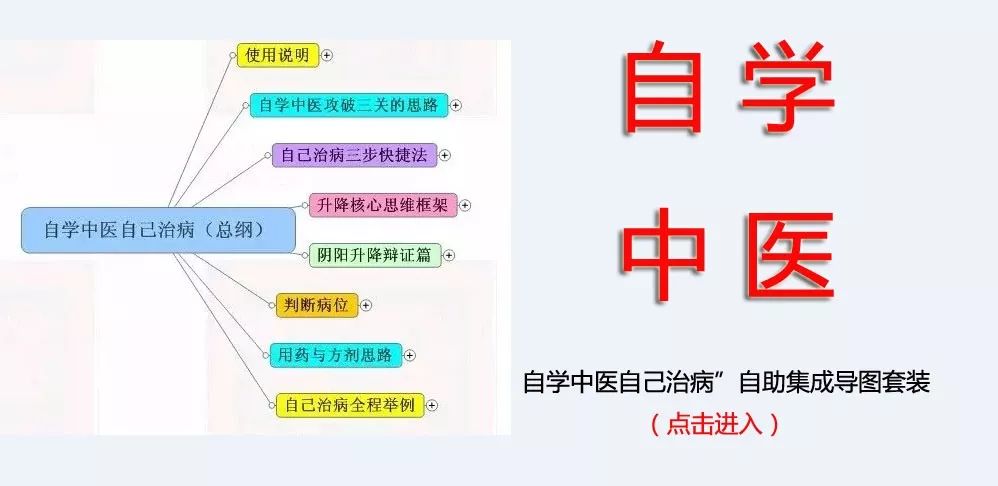
1. Yin deficiency with excessive fire
Kidney Yin deficiency: Liu Wei Di Huang Tang (Six-Ingredient Rehmannia Decoction) is the fundamental formula for kidney Yin deficiency. If the patient only has kidney Yin deficiency without signs of excessive fire, Liu Wei Di Huang Tang is sufficient. If there are symptoms of dry mouth and throat, it indicates that Yin deficiency has begun to generate fire, and Zhi Bai Di Huang Tang (Anemarrhena and Phellodendron Decoction) should be used.
Yin deficiency generating fire, if kidney Yin deficiency is not treated promptly, it will quickly lead to liver fire. That is, kidney Yin deficiency → liver fire → cholecystitis → gallstones.
Patients with kidney Yin deficiency may experience soreness and weakness in the lower back and legs, dizziness, headaches, tinnitus, memory loss, forgetfulness, reduced sexual function, and premature ejaculation. Liver fire may lead to symptoms such as bitter mouth, dry throat, irritability, dry stools, yellow urine, conjunctival congestion, tinnitus, and cholecystitis, indicating excessive fire due to Yin deficiency. The treatment for these conditions is to nourish Yin and reduce liver fire. The combination of Zhi Bai Di Huang Tang, Long Dan Cao (Gentiana), and Qi Ju Di Huang Tang (Lycium and Chrysanthemum Decoction) forms three formulas.
Liver fire can cause gastric inflammation, leading to gastrointestinal dysfunction and gastritis. Fire rising can lead to esophagitis, pharyngitis, and oral inflammation. It can also cause heart fire, resulting in irritability and insomnia, and can lead to lung heat, causing chest tightness. This can lead to excessive fire in the three burners, requiring the addition of San Huang Tang (Three Yellow Decoction).
Gastritis can cause gastric distension, requiring the addition of Bao He Wan (Preserve Harmony Pill) and Ping Wei San (Calm the Stomach Powder). If it leads to gastric erosion and pain, add Bai Ji (Bletilla) and Bai He (Lily) to stop pain. Chronic gastritis can lead to spleen deficiency, requiring the addition of Jian Pi Wan (Strengthen the Spleen Pill).
Chronic gastritis can lead to anemia, resulting in insufficient blood supply to the heart and brain. Severe cases can lead to myocardial ischemia and thrombocytopenia. Anemia can cause insomnia with vivid dreams, palpitations, and lead to insufficient blood supply to the brain, resulting in dizziness and headaches. Therefore, while nourishing Yin and reducing fire, it is also necessary to include sedatives and blood tonics, such as Gui Pi Tang (Return the Spleen Decoction) and Long Gu Mu Li (Dragon Bone and Oyster Shell).
Zhi Mu (Anemarrhena), Chai Hu (Bupleurum), Shan Zha (Hawthorn), Dang Gui (Angelica) for gastric erosion, add Bai Ji, Bai He, and Yan Hu Suo (Corydalis).
Huang Bai (Phellodendron), Long Dan Cao (Gentiana), Shen Qu (Malt), Bai Shao (White Peony) for gastric bleeding, add San Qi (Notoginseng).
Shu Di Huang (Rehmannia), Zhi Zi (Gardenia), Luo Bo Zi (Radish Seed), Bai Zhu (Atractylodes) for tachycardia, add Bai Zi Ren (Biota Seed).
Shan Yao (Chinese Yam), Sheng Di (Raw Rehmannia), Mai Ya (Barley Sprout), Gan Cao (Licorice) for myocardial inflammation, add Tao Ren (Peach Kernel) and Hong Hua (Safflower).
Shan Zhu Yu (Cornus), Che Qian Zi (Plantago), Ji Nei Jin (Chicken Gizzard Lining), Dang Shen (Codonopsis) for palpitations, add Long Gu and Mu Li.
Dan Pi (Moutan), Mu Tong (Akebia), Cang Zhu (Atractylodes), Huang Qi (Astragalus) for insomnia, add Ye Jiao Teng (Polygonum) and Ci Shi (Magnetite).
Ze Xie (Alisma), Huang Lian (Coptis), Hou Po (Magnolia Bark), Mu Xiang (Aucklandia) for excessive heart fire, add Bai Zi Ren.
Fu Ling (Poria), Huang Qin (Scutellaria), Chuan Xiong (Chuanxiong), Jiao Ren (Jujube) for severe gastric distension, add Bing Lang (Areca Nut).
Gou Qi Zi (Goji Berry), Da Huang (Rhubarb), Dan Shen (Salvia), Yuan Zhi (Polygala) for gastric inflammation with red spots, increase the dosage of Da Huang and Lian.
Ju Hua (Chrysanthemum), Zhi Shi (Bitter Orange), Chi Shao (Red Peony), Fu Shen (Poria) for excessive gastric acid, add Wu Bei Zi (Bone of Cuttlefish) and Wa Leng Zi (Cochinchina Momordica).
Mai Dong (Ophiopogon), Shi Jue Ming (Abalone Shell), Long Gu (Dragon Bone), Long Yan Rou (Longan) for gastric hiccups, add Dai Zhi Shi (Calamine).
Wu Wei Zi (Schisandra), Mu Li (Oyster Shell) for dry stools, add Xiao Cheng Qi Tang (Minor Order the Qi Decoction).
Comprehensive treatment includes nourishing Yin, reducing fire, nourishing blood, calming the spirit, and strengthening the spleen and stomach. The combination of Zhi Bai Di Huang Tang, Long Dan Xiao Gan Tang, San Huang Tang, Xiao Cheng Qi Tang, Jian Pi Wan, Gui Pi Wan, Ping Wei San, Bao He Wan, Qi Ju Di Huang Tang, and Mai Wei Di Huang Tang, and Chuan Xiong, Dan Shen, and Chi Shao.
Patients with Yin deficiency and excessive fire are primarily young adults aged 20-40. As age increases, if Yin deficiency and excessive fire are not treated promptly, the condition will worsen, gradually leading to Yang hyperactivity. The condition of Yin deficiency and Yang hyperactivity is more complex. Conditions such as endocrine disorders, organ dysfunction, menopausal syndrome, geriatric syndrome, and various difficult-to-treat syndromes are directly related to Yin deficiency with excessive fire and Yin deficiency with Yang hyperactivity.
In treating these diseases, in addition to nourishing Yin, reducing fire, nourishing blood, calming the spirit, and strengthening the spleen and stomach, it is also necessary to invigorate blood circulation, relieve pain, nourish Yin, subdue Yang, and pacify the liver and extinguish wind.
Formulas
Zhi Mu (Anemarrhena), Chai Hu (Bupleurum), Bai Zi Ren (Biota Seed), Shan Zha (Hawthorn)
Huang Bai (Phellodendron), Long Dan Cao (Gentiana), Dang Gui (Angelica), Shen Qu (Malt)
Shu Di Huang (Rehmannia), Zhi Zi (Gardenia), Luo Bo Zi (Radish Seed), Bai Zhu (Atractylodes)
Shan Yao (Chinese Yam), Sheng Di (Raw Rehmannia), Mai Ya (Barley Sprout), Gan Cao (Licorice)
Shan Zhu Yu (Cornus), Che Qian Zi (Plantago), Ji Nei Jin (Chicken Gizzard Lining), Dang Shen (Codonopsis)
Dan Pi (Moutan), Mu Tong (Akebia), Dang Gui (Angelica), Long Gu (Dragon Bone)
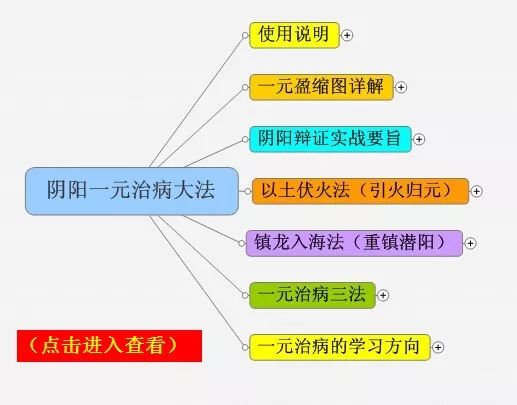
Ze Xie (Alisma), Huang Lian (Coptis), Mu Xiang (Aucklandia), Dai Zhi Shi (Calamine)
Gou Qi Zi (Goji Berry), Ban Xia (Pinellia), Jiao Ren (Jujube), Zhen Zhu Mu (Mother of Pearl)
Ju Hua (Chrysanthemum), Hou Po (Magnolia Bark), Yuan Zhi (Polygala), Shi Gao (Gypsum)
Mai Dong (Ophiopogon), Da Huang (Rhubarb), Fu Shen (Poria), Shi Jue Ming (Abalone Shell)
Wu Wei Zi (Schisandra), Zhi Shi (Bitter Orange), Long Yan Rou (Longan), Ci Shi (Magnetite)
He Shou Wu (Fo-Ti), Chuan Xiong (Chuanxiong), Ye Jiao Teng (Polygonum), Nu Zhen Zi (Ligustrum)
For high blood pressure, add Tian Ma (Gastrodia) and Gou Teng (Uncaria).
For high blood sugar, add Tian Hua Fen (Trichosanthes) and Ge Gen (Pueraria) and corn silk.
For cerebral thrombosis and myocardial infarction, add San Qi (Notoginseng) and Tao Ren (Peach Kernel) and Hong Hua (Safflower).
For cervical spondylosis and lumbar spondylosis, add Shuang Ji Sheng (Dichroa) and Chuan Duan (Dipsacus) and San Qi (Notoginseng) and Tao Ren (Peach Kernel) and Hong Hua (Safflower).
For damp-heat leukorrhea, add Ku Shen (Sophora) and Bai Zhi (Angelica) and Tu Fu Ling (Smilax) and Cang Zhu (Atractylodes).
For damp-heat itching, add Wu Mei (Mume) and She Chuang Zi (Cnidium) and Bai Hua She Cao (Hedyotis).
2. Yang deficiency generating cold
Patients with Yang deficiency generating cold are more common in winter, primarily affecting middle-aged and elderly individuals, with a higher incidence in women.
Yang is tangible. One can tell whether a person’s Yang energy is sufficient by observing their external appearance. A person with sufficient Yang energy is spirited, speaks loudly, has bright eyes, a rosy complexion, black hair, a strong body, and quick thinking; all of these are manifestations of Yang.
Yang deficiency typically centers around kidney Yang deficiency, which stores true Yin and true Yang. Kidney Yang deficiency leads to spleen Yang deficiency, resulting in symptoms such as fear of cold, cold limbs, limb soreness, and swelling, and a constitution prone to edema. Stomach cold, excessive stomach acid, loose stools, bowel sounds and diarrhea, and persistent lower back pain. In women, cold in the uterus leads to infertility, delayed menstruation or amenorrhea, pelvic fluid accumulation, and blocked fallopian tubes, with excessive leukorrhea. In men, impotence, premature ejaculation, reduced sexual function, frequent urination at night, and incontinence.
Yang deficiency can also lead to fatigue, mental lethargy, slow movements, easy fatigue, low blood pressure, bradycardia, and susceptibility to colds.
Yang deficiency can also lead to Qi deficiency and middle Qi deficiency, resulting in symptoms such as gastric prolapse, uterine prolapse, and rectal prolapse. It can also affect fat metabolism, leading to fatty liver and abdominal obesity.
Yang deficiency leads to excessive Yin, and excessive Yin leads to Yang deficiency. Sufficient Yang energy results in strength; when a person has sufficient Yang energy, they are energetic and not fatigued, while the opposite leads to fatigue and lethargy.
Yang can transform Qi, and Qi belongs to Yang. Yang deficiency can lead to Qi deficiency. Kidney Yang deficiency leads to kidney Qi deficiency. Heart Yang deficiency leads to heart Qi deficiency. Qi can transform blood; Qi and blood share the same source, leading to heart blood deficiency. Spleen Yang deficiency can lead to spleen Qi deficiency and stomach Qi deficiency. Spleen Qi deficiency can lead to lung Qi deficiency, and heart blood deficiency can lead to lung Qi deficiency, while heart Qi deficiency can lead to lung Qi deficiency.
Yang deficiency generates cold, which generates dampness, and dampness generates pain. Cold is constricting, while dampness is obstructive. The combination of cold and dampness can lead to obstruction. Cold contracts, while heat expands. Cold and dampness can lead to poor circulation of Qi and blood, resulting in wind-cold-damp obstruction and joint pain. Severe cold leads to Yang not rising, resulting in weak and soft limbs, fatigue, and mental exhaustion. Kidney Yang deficiency leads to spleen Yang deficiency, causing spleen Yang to be weak, resulting in dampness obstructing the spleen. The spleen cannot transform dampness; it prefers dryness and dislikes dampness, leading to spleen deficiency diarrhea, loose stools, bowel sounds, and abdominal pain. Spleen Yang deficiency can lead to stomach cold, causing stomach pain, bloating, poor digestion, and excessive stomach acid, among other gastric diseases. Spleen Qi deficiency can lead to stomach Qi deficiency, resulting in gastric prolapse, rectal prolapse, and uterine prolapse. Kidney Yang deficiency can lead to heart Yang deficiency, resulting in bradycardia and low blood pressure.
Kidney Yang deficiency can lead to male impotence, premature ejaculation, and reduced sexual function. In women, it can lead to cold in the uterus, excessive leukorrhea, blocked fallopian tubes, pelvic fluid accumulation, ovarian cysts, and persistent lower abdominal pain. Kidney Yang deficiency can also lead to dysmenorrhea, amenorrhea, and delayed menstruation.
Kidney Yang deficiency can lead to metabolic dysfunction of body fluids, resulting in kidney edema, generalized edema, and lower limb swelling. Excessive dampness can lead to itching, such as generalized itching and eczema, which are caused by excessive cold and dampness obstructing the body.
Principles for treating diseases caused by Yang deficiency generating cold: tonify the kidneys and strengthen Yang, warm the middle and disperse cold. The main treatment is to warm the meridians and promote Yang, while tonifying the middle and benefiting Qi and nourishing blood as supplementary treatments.
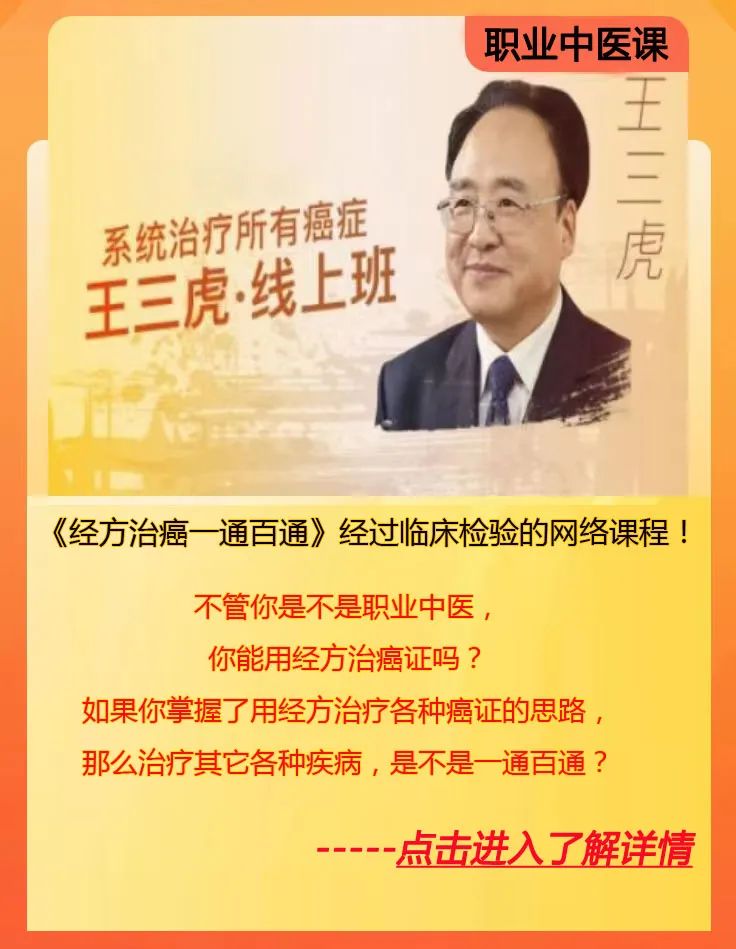
Formulas
Gui Fu Di Huang Tang (Cinnamon and Atractylodes Decoction) + Fu Zi Li Zhong Wan (Aconite and Ginseng Decoction) + Bu Zhong Yi Qi Tang (Tonify the Middle and Benefit Qi Decoction) + Shi Quan Da Bu Tang (Ten Complete Great Tonifying Decoction) + Jian Pi Wan (Strengthen the Spleen Pill) + Gui Pi Tang (Return the Spleen Decoction) + Bao He Wan (Preserve Harmony Pill) + Xiang Sha Yang Wei Wan (Aromatic Sand to Nourish the Stomach Pill) + Du Huo Sheng Shi Tang (Angelica to Overcome Dampness Decoction)
For cervical erosion, gynecological itching, and damp-heat leukorrhea, clear heat and drain dampness, adding Huang Bai (Phellodendron), Tu Fu Ling (Smilax), and Cang Zhu (Atractylodes). For trichomonas and fungal infections, add Ku Shen (Sophora) and She Chuang Zi (Cnidium). For gastric erosion with damp-heat, add Huang Lian (Coptis). For dysmenorrhea and lower abdominal pain, add Wu Zhu Yu (Evodia).
Tonify the kidneys and strengthen Yang, warm the middle and disperse cold.
Fu Zi (Aconite), Dang Shen (Codonopsis), Sheng Ma (Cimicifuga), Gui Zhi (Cinnamon Twig)
Rou Gui (Cinnamon), Huang Qi (Astragalus), Chai Hu (Bupleurum), Cang Zhu (Atractylodes)
Shu Di Huang (Rehmannia), Dang Gui (Angelica), Sha Ren (Amomum), Bian Dou (Hyacinth Bean)
Shan Yao (Chinese Yam), Bai Shao (White Peony), Rou Dou Kou (Nutmeg), Yin Yang Huo (Epimedium)
Shan Zhu Yu (Cornus), Bai Zhu (Atractylodes), Chen Pi (Tangerine Peel), Ba Jiao Tian (Morinda)
Dan Pi (Moutan), Gan Cao (Licorice), Shan Zha (Hawthorn), Bu Guo Zhi (Psoralea)
Ze Xie (Alisma), Mu Xiang (Aucklandia), Shen Qu (Malt), Tu Si Zi (Cuscuta)
Fu Ling (Poria), Jiao Ren (Jujube), Luo Bo Zi (Radish Seed), He Shou Wu (Fo-Ti)
Du Zhong (Eucommia), Yuan Zhi (Polygala), Mai Ya (Barley Sprout), Du Huo (Angelica)
Niuxi (Achyranthes), Long Yan Rou (Longan), Ji Nei Jin (Chicken Gizzard Lining), Qiang Huo (Notopterygium)
Gan Jiang (Dried Ginger), Chuan Xiong (Chuanxiong), Huang Lian (Coptis), Fang Feng (Saposhnikovia)
Huang Bai (Phellodendron)
Prescription explanation: The kidneys store true Yin and true Yang, so the first step is to tonify the kidneys and strengthen Yang with Gui Fu Di Huang Tang. To tonify true Yang: Qi is Yang; Yang deficiency leads to Qi deficiency, Qi deficiency leads to blood deficiency, and blood deficiency leads to insomnia with vivid dreams, resulting in both Qi and blood deficiency. Si Jun Zi Tang (Four Gentlemen Decoction) tonifies Qi, Si Wu Tang (Four Substance Decoction) tonifies blood, and Shi Quan Da Bu Tang tonifies both Qi and blood, warming Yang and tonifying the kidneys. Qi deficiency leads to middle Qi sinking, requiring Bu Zhong Yi Qi Tang to tonify middle Qi. Kidney Yang deficiency leads to spleen Yang deficiency, causing stomach cold, requiring Fu Zi Li Zhong Wan, Xiang Sha Yang Wei Wan, Bao He Wan, Jian Pi Wan, and other formulas to warm the middle, disperse cold, and strengthen the spleen and drain dampness. Gui Pi Tang nourishes blood and calms the spirit. Du Huo Sheng Shi Tang dispels wind-dampness and promotes Yang in the four limbs. Huang Lian and Huang Bai are used for those with dampness generating false heat.
3. Both Yin and Yang deficiency
Patients with both Yin and Yang deficiency are also quite common, primarily affecting women, especially middle-aged individuals. The condition of patients with both Yin and Yang deficiency is more complex, falling within the category of difficult-to-treat syndromes and geriatric syndromes. If not treated properly, it can often lead to kidney failure. Clinically, most cases of kidney failure are caused by both kidney Yin and Yang deficiency.
Patients with both Yin and Yang deficiency exhibit symptoms of both Yin deficiency and Yang deficiency. This condition cannot be treated by addressing Yin or Yang alone; both must be treated simultaneously. Nourishing Yin while also tonifying Yang, reducing fire while dispelling cold, and treating both Yin and Yang simultaneously yield very satisfactory results; otherwise, the opposite occurs.
Patients with both Yin and Yang deficiency may exhibit symptoms of both Yin deficiency generating fire and Yang deficiency generating cold. Medications that nourish Yin and reduce fire are generally cooling, while those that warm the middle and disperse cold are generally warming. Simply nourishing Yin and reducing fire will exacerbate Yang deficiency, while merely tonifying Yang and dispersing cold will intensify false fire. Therefore, nourishing Yin and reducing fire, tonifying the kidneys and strengthening Yang must be done concurrently to achieve balance between Yin and Yang, leading to patient recovery. Thus, the ultimate goal of TCM treatment is to maintain and regulate the balance of Yin and Yang within the body.
The treatment of patients with both Yin and Yang deficiency may seem contradictory, and the properties of the medications may appear conflicting. This issue can be explained using the principle of meridian affinity in TCM. TCM ancestors discovered that each herb has its own meridian affinity; for example, kidney tonics enter the kidney meridian, liver tonics enter the liver meridian, spleen tonics enter the spleen meridian, heart tonics enter the heart meridian, and lung tonics enter the lung meridian. Each herb follows its own path, achieving its purpose. Various herbs exert their effects, resolving their respective contradictions.
Patients with both Yin and Yang deficiency typically exhibit symptoms such as both heat intolerance and cold intolerance; excess above and deficiency below; during the day, they may feel cold in the morning and evening but hot at noon; in different seasons, they may feel cold in winter and spring but hot in summer and autumn; they may experience both internal heat and external cold; both inflammation and cold dampness; heat in the upper body and cold in the lower body; excessive sweating in the upper body and cold intolerance in the lower body; excessive inflammation in the upper body and heavy cold dampness in the lower body. They may also experience symptoms such as bitter mouth, dry throat, fatigue, weakness, irritability, excessive leukorrhea, and gastrointestinal dysfunction, leading to spleen deficiency, weak stomach, poor digestion, lack of appetite, significant gastric inflammation, gastric ulcers, loose stools, and ulcerative colitis, as well as symptoms of generalized edema, fatty liver, and various gynecological diseases.
Principles for treating both Yin and Yang deficiency: nourish Yin, reduce fire, nourish blood, calm the spirit, tonify the kidneys, and warm the middle while dispersing cold.
Prescriptions
Zhi Bai Di Huang Tang + Gui Fu Di Huang Tang + San Huang Tang + Shi Quan Da Bu Tang + Gui Pi Tang + Jian Pi Wan + Bao He Wan + Ping Wei San + Xiang Sha Yang Wei Wan + Long Dan Xiao Gan Tang + Fu Zi Li Zhong Wan
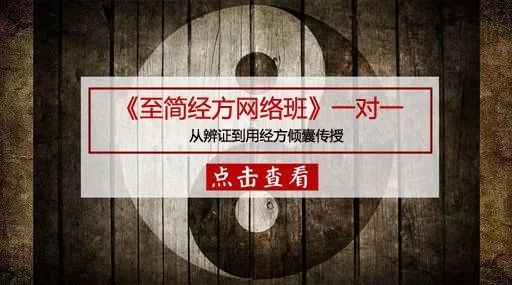
Zhi Mu (Anemarrhena), Chai Hu (Bupleurum), Cang Zhu (Atractylodes), Dang Shen (Codonopsis)
Huang Bai (Phellodendron), Long Dan Cao (Gentiana), Bian Dou (Hyacinth Bean), Huang Qi (Astragalus)
Sheng Di (Raw Rehmannia), Zhi Zi (Gardenia), Yi Ren (Job’s Tears), Mu Xiang (Aucklandia)
Shan Yao (Chinese Yam), Sheng Di (Raw Rehmannia), Sha Ren (Amomum), Jiao Ren (Jujube)
Shan Zhu Yu (Cornus), Che Qian Zi (Plantago), Rou Dou Kou (Nutmeg), Yuan Zhi (Polygala)
Dan Pi (Moutan), Mu Tong (Akebia), Dang Gui (Angelica), Long Gu (Dragon Bone)
Ze Xie (Alisma), Huang Lian (Coptis), Mu Xiang (Aucklandia), Dai Zhi Shi (Calamine)
Gou Qi Zi (Goji Berry), Ban Xia (Pinellia), Jiao Ren (Jujube), Zhen Zhu Mu (Mother of Pearl)
Ju Hua (Chrysanthemum), Hou Po (Magnolia Bark), Yuan Zhi (Polygala), Shi Gao (Gypsum)
Mai Dong (Ophiopogon), Da Huang (Rhubarb), Fu Shen (Poria), Shi Jue Ming (Abalone Shell)
Wu Wei Zi (Schisandra), Zhi Shi (Bitter Orange), Long Yan Rou (Longan), Ci Shi (Magnetite)
He Shou Wu (Fo-Ti), Chuan Xiong (Chuanxiong), Ye Jiao Teng (Polygonum), Nu Zhen Zi (Ligustrum)
For high blood pressure, add Tian Ma (Gastrodia) and Gou Teng (Uncaria).
For high blood sugar, add Tian Hua Fen (Trichosanthes) and Ge Gen (Pueraria) and corn silk.
For cerebral thrombosis and myocardial infarction, add San Qi (Notoginseng) and Tao Ren (Peach Kernel) and Hong Hua (Safflower).
For cervical spondylosis and lumbar spondylosis, add Shuang Ji Sheng (Dichroa) and Chuan Duan (Dipsacus) and San Qi (Notoginseng) and Tao Ren (Peach Kernel) and Hong Hua (Safflower).
For damp-heat leukorrhea, add Ku Shen (Sophora) and Bai Zhi (Angelica) and Tu Fu Ling (Smilax) and Cang Zhu (Atractylodes).
For damp-heat itching, add Wu Mei (Mume) and She Chuang Zi (Cnidium) and Bai Hua She Cao (Hedyotis).
4. Liver Qi disharmony
The internal causes of the seven emotions—joy, anger, worry, thought, sadness, fear, and shock—are the seven emotions, which are the seven types of emotional states in every person.
Joy causes Qi to relax (which can harm the body), anger causes Qi to rise (which harms the liver), sadness causes Qi to dissipate (which harms the lungs), fear causes Qi to descend (which harms the kidneys), overthinking harms the spleen, worry harms the heart, and shock harms the spirit.
TCM believes that the mechanisms of internal diseases in the human body are directly related to the seven emotions, with anger being particularly prominent among them.
Anger causes Qi to rise. Excessive Qi can harm the liver; the liver governs emotions. The liver belongs to wood, which has a nature of free expansion, preferring smoothness and disliking depression. When people are unhappy or depressed, it can lead to anger. Long-term mental and emotional suppression can lead to the liver’s emotional flow being obstructed, causing Qi stagnation, which in turn leads to Qi and blood not flowing smoothly. Mild cases can lead to liver Qi disharmony and liver Qi stagnation, while severe cases can lead to liver Qi stagnation, endangering life.
For example, conflicts between people, grudges, fighting, disharmony between couples, economic poverty, and career setbacks can all lead to unhappiness. Over time, this can lead to emotional distress, causing Qi to reverse and stagnate, resulting in various diseases.
In my nearly 40 years of medical practice, I have found that patients with internal diseases caused by Qi account for 50% of the total incidence rate. This means that one in every two internal medicine patients has a disease caused by emotional distress. However, these Qi-related internal diseases cannot be detected by Western medical instruments. The deficiency syndromes of various organs cannot be detected by instruments either. Many patients undergo tests when they feel unwell, and when all indicators are normal, they come to me, and I can diagnose many issues just by taking their pulse. Instruments are not omnipotent; they can only detect tangible pathological changes in the body. Many patients overly trust instruments, believing that if they feel unwell, they should undergo comprehensive tests. Some doctors also rely solely on instrument indicators for diagnosis. While instruments are scientific, they are not comprehensive science.
The liver belongs to wood, which can control earth; when wood invades earth, it represents the conflict of the five elements. The spleen and stomach belong to earth, meaning that liver diseases can lead to spleen and stomach issues, causing gastrointestinal dysfunction. Clinically, hepatitis, excessive liver fire, or liver Qi disharmony can all lead to gastric diseases. As the saying goes, “Nine out of ten people have stomach issues,” meaning that among every ten people, nine have gastric diseases. In the incidence of cancer, gastric cancer and esophageal cancer are significant, with very high incidence rates. How to cure gastric diseases and reduce the occurrence of cancer is a major topic for today’s doctors.
Although there are many gastric diseases, the fundamental causes can be categorized into two aspects. One is liver disease leading to gastric disease, with liver Qi and liver fire causing gastric diseases accounting for 80%. The other is kidney Yang deficiency leading to stomach cold, causing gastric diseases, accounting for 20%. Although there are many gastric diseases, they are also relatively easy to treat. If treatment does not start from the root cause, simply treating gastritis will be difficult to cure, leading to chronic conditions with few successful recoveries.
However, the incidence of gastric diseases arises from three causes. One is excessive liver fire leading to gastritis, another is liver Qi disharmony leading to gastritis and gastric distension, and the third is spleen and kidney Yang deficiency leading to stomach cold. The first two causes are the most common.
Gastric diseases caused by liver Qi disharmony are particularly prominent, with a high incidence rate. Cancers in various parts of the body are also directly related to this, as Qi stagnation inevitably leads to blood stasis. TCM believes that when Qi flows, blood flows; when Qi is blocked, blood is blocked. Blockages lead to pain, and pain indicates blockages. Qi stagnation and blood stasis can easily lead to tumor formation and cancer.
Liver Qi disharmony can lead to gastric distension and fullness in the chest and ribs. It can also lead to excessive liver fire; when the liver is diseased, it generates fire, and there is no concept of liver deficiency. Excessive liver fire can lead to kidney Yin deficiency, and kidney Yin deficiency can exacerbate liver fire, creating a reciprocal relationship. This is also known as the child disease affecting the mother, and the mother disease affecting the child. The treatment principle is to treat liver Qi disharmony while simultaneously reducing liver fire and tonifying kidney Yin. Liver Qi disharmony can lead to spleen Qi disharmony, resulting in spleen deficiency, and the treatment principle is to strengthen the spleen and harmonize the stomach. Therefore, treating patients with liver Qi disharmony requires both soothing the liver and regulating Qi, clearing heat and reducing fire, nourishing Yin and subduing Yang. If necessary, it may also require harmonizing the stomach to stop vomiting, controlling acidity, invigorating blood circulation, and relieving pain. Therefore, treating with a single formula is very one-sided and yields minimal results; a multi-faceted approach is necessary to achieve satisfactory results.
Prescriptions for liver Qi disharmony
Xiao Yao San (Free and Easy Wanderer Powder) + Long Dan Xiao Gan Tang + Zhi Bai Di Huang Tang + San Huang Tang + Bao He Wan + Ping Wei San + Jian Pi Wan + Gui Pi Tang. Invigorate blood stasis + Tao Hong Si Wu Tang + Xue Fu Zhu Yu Tang.
Chai Hu (Bupleurum), Zhi Mu (Anemarrhena), Xiang Fu (Cyperus), Shan Zha (Hawthorn), Dang Shen (Codonopsis) for gastric erosion, add Bai Ji (Bletilla) and Bai He (Lily) and Yan Hu Suo (Corydalis).
Dang Gui (Angelica), Huang Bai (Phellodendron), Yu Jin (Curcuma), Shen Qu (Malt), Huang Qi (Astragalus) for gastric acid, add Wu Bei Zi (Bone of Cuttlefish) and Wa Leng Zi (Cochinchina Momordica).
Bai Shao (White Peony), Shu Di Huang (Rehmannia), Qing Pi (Green Tangerine Peel), Luo Bo Zi (Radish Seed) for irritability and insomnia, add Long Gu (Dragon Bone) and Mu Li (Oyster Shell).
Bai Zhu (Atractylodes), Zhen Zhu Mu (Mother of Pearl), Chuan Xiong (Chuanxiong), Nu Zhen Zi (Ligustrum) for constipation, add Mang Xiao (Sodium Sulfate).
Fu Ling (Poria), Shi Gao (Gypsum), Dan Shen (Salvia), Da Huang (Rhubarb) for He Huan Pi (Mimosa) and Bai Zhi (Angelica).
Bai Mu Er (White Fungus), Shi Jue Ming (Abalone Shell), Chi Shao (Red Peony), Zhi Shi (Bitter Orange) for Qi stagnation and blood stasis, add San Qi (Notoginseng).
Long Dan Cao (Gentiana), Fu Ling (Poria), Da Huang (Rhubarb), Mai Dong (Ophiopogon) for Qi stagnation and blood stasis.
5. Liver Qi stagnation
Patients with liver Qi stagnation often exhibit symptoms such as irritability, restlessness, chest and rib fullness and pain, abdominal distension and belching, loss of appetite, irritability and insomnia, palpitations, low spirits, and even symptoms of mental confusion and incoherence. Mental illnesses such as schizophrenia, neurosis, depression, and mania in Western medicine are closely related to liver Qi stagnation.
The liver governs emotions. When liver Qi rises, liver fire ascends, leading to liver Qi stagnation and obstructing the body’s functions. The body’s ability to rise and fall is hindered, preventing the clear from rising and the turbid from descending. Mild cases can lead to mental unrest, vivid dreams, and stubborn insomnia, while severe cases can lead to neurological dysfunction and mental illness.
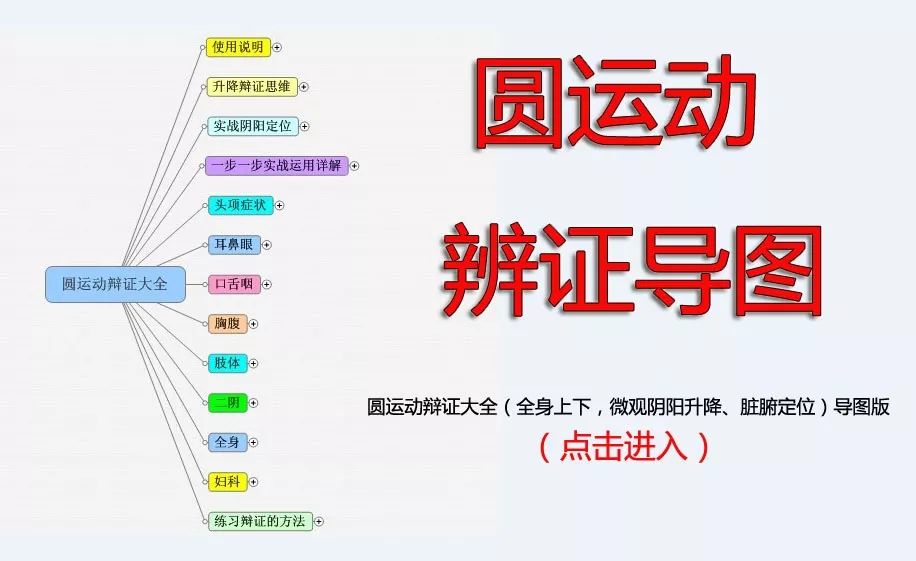
Treatment for liver Qi stagnation
Chai Hu (Bupleurum), Long Gu (Dragon Bone), Huang Lian (Coptis), Mai Dong (Ophiopogon), Xiang Fu (Cyperus) for high blood pressure, add Tian Ma (Gastrodia) and Gou Teng (Uncaria).
Dang Gui (Angelica), Mu Li (Oyster Shell), Huang Qin (Scutellaria), Wu Wei Zi (Schisandra) for high blood sugar, add Hua Fen (Trichosanthes) and Ge Gen (Pueraria).
Bai Shao (White Peony), Dai Zhi Shi (Calamine), Huang Bai (Phellodendron), He Shou Wu (Fo-Ti), Qing Pi (Green Tangerine Peel) for irritability and insomnia, add E Jiao (Donkey-hide Gelatin).
Bai Zhu (Atractylodes), Zhen Zhu Mu (Mother of Pearl), Chuan Xiong (Chuanxiong), Nu Zhen Zi (Ligustrum) for constipation, add Mang Xiao (Sodium Sulfate).
Fu Ling (Poria), Shi Gao (Gypsum), Dan Shen (Salvia), Da Huang (Rhubarb) for He Huan Pi (Mimosa) and Bai Zhi (Angelica).
Bai Mu Er (White Fungus), Shi Jue Ming (Abalone Shell), Chi Shao (Red Peony), Zhi Shi (Bitter Orange) for Qi stagnation and blood stasis, add San Qi (Notoginseng).
Long Dan Cao (Gentiana), Fu Ling (Poria), Da Huang (Rhubarb), Mai Dong (Ophiopogon) for Qi stagnation and blood stasis.
TCM treatment emphasizes differentiation and treatment based on syndrome. Differentiation and treatment are the fundamental principles of TCM, and achieving balance between Yin and Yang is the ultimate goal of treatment. The correctness of differentiation directly affects the determination of treatment principles and the safety and well-being of patients; it must not be taken lightly.
TCM differentiation typically involves four examinations and eight principles. The four examinations are observation, listening, inquiry, and pulse diagnosis. The eight principles are Yin, Yang, exterior, interior, cold, heat, deficiency, and excess. The eight methods are sweating, vomiting, purging, harmonizing, warming, clearing, tonifying, and reducing.
The four examinations
Observation involves examining the external condition of the body, including demeanor, limbs, and tongue. Listening involves diagnosing diseases through sound and smell. Inquiry involves understanding the patient’s medical history and current symptoms. Pulse diagnosis involves understanding the nature of the disease, its deficiency or excess, and its Yin-Yang and cold-heat attributes.
Among the four examinations, pulse diagnosis is the most important. Pulse diagnosis is the key to the four examinations; a qualified TCM practitioner must understand pulse diagnosis. Those who do not understand pulse diagnosis or only have superficial knowledge are not qualified TCM practitioners. In other words, those who cannot perform pulse diagnosis are not qualified TCM practitioners.
While observation, listening, inquiry, and pulse diagnosis are all crucial for diagnosis, pulse diagnosis is particularly key. Observation can only reveal some external characteristics of the patient, listening can only reveal abnormal sounds and smells, and inquiry can only reveal the process of the patient’s symptoms. Pulse diagnosis, however, can uncover the Yin-Yang attributes of the disease, the patient’s cold-heat constitution, deficiency-excess nature, and the location of the disease. Clinically, some patients may exhibit true heat and false cold, or true cold and false heat. Without pulse diagnosis, it is difficult to discern the true nature of the disease, leading to ineffective treatment in mild cases and exacerbation in severe cases.
The eight principles are the eight major guidelines for differentiation. The exterior and interior principles indicate the location of the disease, cold and heat indicate the nature of the disease, and deficiency and excess reflect the severity of the disease. The Yin and Yang principles are the overarching principles. Using the eight principles for differentiation helps determine the location of the disease, understand its cold-heat nature, grasp the severity of the evil and righteousness, and seek the balance of Yin and Yang in the patient, which is the ultimate goal of TCM treatment. Therefore, among the eight principles, the Yin and Yang principles are the overarching principles. Mastering the eight principles of differentiation is fundamental for every TCM practitioner; if one does not master the eight principles, treatment will lose direction, and treatment principles cannot be established. If differentiation is unclear, it may not only yield minimal results but may also delay treatment and worsen the condition. Therefore, accurate application of the eight principles clarifies the patient’s pathology, allowing for the establishment of treatment principles, leading to rapid recovery.
The eight methods refer to the eight types of treatment principles determined after identifying the pathogen. Different methods are employed based on different conditions, and treatment can be based on a single formula or multiple formulas.
I come from a family of TCM practitioners and have been treating internal diseases with TCM. My differentiation primarily relies on pulse diagnosis, and my treatment employs either single or multiple formulas. The formulas mentioned above may seem like commonly used prescriptions from my ancestors, but they are actually the essence I have summarized from long-term medical practice, particularly effective for difficult-to-treat internal diseases, menopausal syndrome, geriatric syndrome, and other conditions.
The emergence and development of TCM internal diseases are complex. TCM diagnosis emphasizes a holistic view, which is fundamentally different from Western medicine’s localized treatment.
The formation of one disease often leads to multiple symptoms. Tracing back to the root cause, it often belongs to a specific organ that has malfunctioned. For example, kidney Yin deficiency leads to excessive liver fire, which causes multiple inflammatory conditions; kidney Yang deficiency can lead to cold symptoms in various parts of the body. TCM adopts a root treatment approach, with the former requiring nourishing Yin and reducing fire, and the latter requiring warming the middle and dispersing cold, achieving both symptomatic and root treatment with good efficacy.
The mechanisms of TCM internal diseases are often interconnected, typically starting with kidney disease. When the Yin and Yang of the kidneys become imbalanced, either kidney Yang deficiency or kidney Yin deficiency occurs, or both Yin and Yang may be deficient. Yin deficiency generates fire, Yang deficiency generates cold, and both Yin and Yang deficiency can lead to simultaneous cold and fire. The nature of diseases can be boiled down to two points: cold and heat, which represent the imbalance of Yin and Yang. The kidneys store true Yin and Yang; generally speaking, when kidney Yin and Yang are balanced, the body remains healthy; conversely, when Yin and Yang are imbalanced, the body becomes ill. Thus, TCM has long held the saying, “The kidneys are the foundation of life.”
TCM believes that “the kidneys are the source of pre-natal essence, while the spleen and stomach are the source of post-natal essence.” In my treatment process, I primarily focus on treating the kidneys, with the spleen and stomach as secondary, followed by the liver. Many internal diseases caused by the disorders of the kidneys, spleen, and liver are prevalent, and treating the kidneys is of utmost importance.
TCM treatment emphasizes supporting the righteous and eliminating the evil. When the root cause is treated, the symptoms will naturally resolve. However, to improve treatment efficiency, most treatments follow the principle of addressing both symptoms and root causes. The concepts of Wei Qi and Ying Blood serve as a compass in the diagnostic process. Regulating Ying and Wei, nourishing Qi and blood. When Ying and Wei are harmonized, the external defenses are strengthened; when Qi and blood are sufficient, the fluids flow smoothly. My treatment focuses on root causes, emphasizing key treatments, addressing the main contradictions causing the disease, and controlling the symptomatic characteristics, achieving satisfactory results through simultaneous treatment of symptoms and root causes.
I have practiced medicine for over 40 years, particularly excelling in difficult internal diseases in TCM. My treatment methods involve a wide range of formulas and medications, breaking the conventional usage of historical practitioners, which many modern doctors find unacceptable and even oppose, but it is worth trying to observe the results. In my long-term medical practice, I have found that a complex syndrome cannot be treated with just one or two formulas; rather, a flexible application of multiple formulas is necessary to achieve precise results.
In my years of medical practice, I have discovered that correct treatment stems from accurate diagnosis. Correct differentiation leads to correct treatment, and recovery is just around the corner. Incorrect differentiation may delay the condition in mild cases and lead to adverse consequences in severe cases, hence the difficulty of differentiation.
Pulse diagnosis can directly determine the location, nature, and the balance of righteousness and evil, playing a crucial role in my medical practice, akin to a lighthouse guiding night navigation.
Original article extended reading:
Comprehensive explanation of fever! (Differentiation of disease mechanisms and treatment methods based on cold damage thinking) —> Click to read
Recommended books for purchase:
(Reprint statement: This article is reprinted from the internet, and the copyright belongs to the original author. If there is any infringement, please contact us for deletion!)
For more exclusive TCM secrets, scan the QR code below to follow our public account:
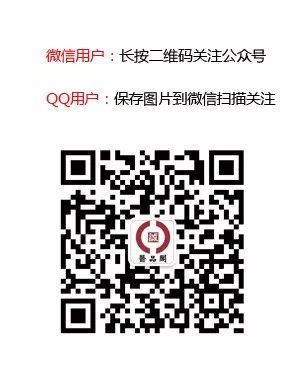
TCM internal treatment course:
“The Simplest Classic Formula Online Class” one-on-one, from differentiation to using classic formulas, sharing everything!!! (Click to enter)
TCM external treatment course:
“Hands-on TCM” can treat diseases without any foundation!!! (One-on-one teaching) (Click to enter)
TCM learning mind map series:
“Embedding Six Meridians Differentiation”—-Embedding Six Meridians Differentiation into Your Brain” electronic version mind map (Click to enter)
“Self-learning TCM to Treat Diseases” self-help integrated mind map set (Click to enter)
“Yin-Yang Unified Treatment Method” (Returning complex TCM to the one-yuan path) (Click to enter)
“Round Motion Differentiation Encyclopedia” (Whole body, micro Yin-Yang rise and fall, organ positioning) mind map version (Click to enter)
If this article has helped you
Please scan to reward,as you wish

